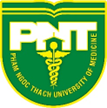Understanding Health Literacy in the Context of Emerging Infectious Diseases
Health literacy plays a crucial role in our ability to navigate the complex world of healthcare, especially during times of crisis such as the ongoing Covid-19 pandemic. As the world grapples with the challenges posed by emerging infectious diseases, it becomes increasingly important to ensure that individuals have the knowledge and skills necessary to make informed decisions about their health.
What is Health Literacy?
Health literacy refers to the ability to obtain, understand, and use health information to make appropriate health decisions. It encompasses a range of skills, including reading, writing, numeracy, and critical thinking. Individuals with low health literacy may struggle to understand health-related information, leading to poor health outcomes and increased healthcare costs.
The Impact of Health Literacy on Emerging Infectious Diseases
Emerging infectious diseases, such as Covid-19, present unique challenges in terms of health literacy. The rapid spread of these diseases, coupled with the constant influx of new information, can overwhelm individuals who lack the necessary skills to navigate the ever-changing landscape of public health guidelines and recommendations.
Low health literacy can hinder individuals’ ability to understand the importance of preventive measures, such as hand hygiene, social distancing, and mask-wearing. It can also lead to confusion and misinformation, as individuals may struggle to differentiate between reliable sources of information and unreliable ones.
Promoting Health Literacy during the Covid-19 Pandemic
Given the critical role of health literacy in managing emerging infectious diseases like Covid-19, it is essential to promote and enhance health literacy among the general population. Here are a few strategies that can be employed:
- Clear and Accessible Communication: Health information should be communicated in plain language, avoiding jargon and complex medical terminology. Visual aids, such as infographics and videos, can also enhance understanding.
- Targeted Outreach: Efforts should be made to reach vulnerable populations, including those with low literacy levels, limited English proficiency, and socioeconomic disadvantages. Tailoring messages to specific cultural and linguistic needs can improve comprehension.
- Collaboration with Community Organizations: Partnering with community organizations can help disseminate accurate information and address the unique needs of different communities. This can include providing translated materials, hosting educational workshops, and offering support services.
- Empowering Individuals: Encouraging individuals to ask questions, seek clarification, and engage in shared decision-making can empower them to take an active role in their health. This can be achieved through patient education initiatives and the promotion of patient-provider partnerships.
The Future of Health Literacy and Emerging Infectious Diseases
As the world continues to face the challenges of emerging infectious diseases, the importance of health literacy cannot be overstated. By equipping individuals with the skills and knowledge necessary to understand and respond to public health crises, we can mitigate the impact of these diseases and protect the well-being of our communities.
Investing in health literacy initiatives, both at the individual and community level, can yield long-term benefits. By fostering a population that is well-informed and capable of making informed decisions, we can build resilience and preparedness for future outbreaks.
In Conclusion
Health literacy is a vital component in the fight against emerging infectious diseases like Covid-19. By promoting clear communication, targeted outreach, collaboration with community organizations, and empowering individuals, we can enhance health literacy and mitigate the impact of these diseases. Let us strive to build a society that is well-equipped to navigate the complexities of healthcare, now and in the future.
